The Right Hand Rule for Cross Products
Beware any time you hear "The Right Hand Rule". In intro. physics, there are at least four different right hand rules - and you have to apply them differently. (I like to call them "The Right Hand Rule for Cross Products", "The Right Hand Rule for Rotations", "The Right Hand Rule for [magnetic fields created by] Wires", and "The Right Hand Rule for [magnetic fields created by] Coils".)
Until you're comfortable getting the meaning from the context, "overloading" multiple ideas in one "file" in your brain is very likely to confuse you. Until then, always ask "The right hand rule for what?"
The "Hinge Method"
Suppose you're given an equation including a cross product, such as C→ = A→ × B→ (spoken as "C equals A cross B"). If you're given the two vectors A→ and B→ of any size and any direction, you can find the direction of the result of the cross product A→ × B→ by following these steps:
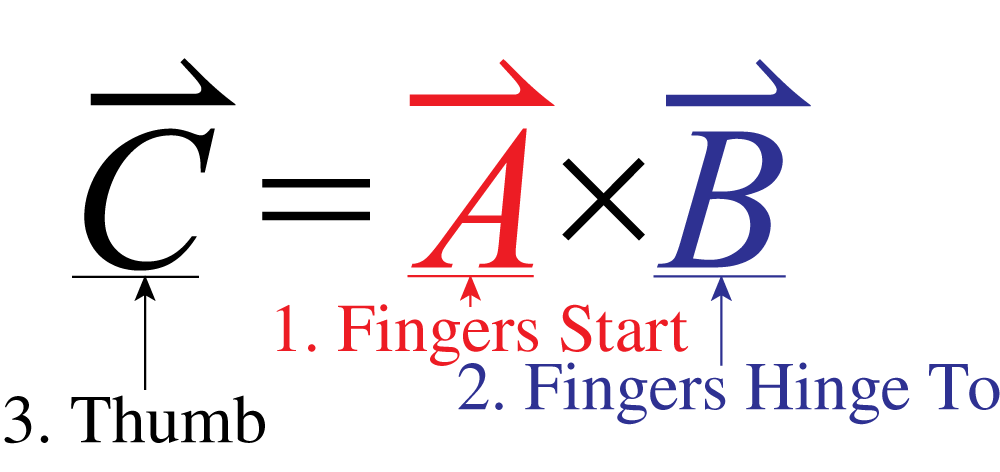
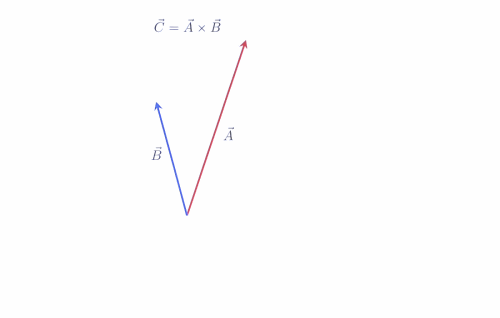
0. The result of any cross product is perpendicular to both vectors on either side of the cross. Since any two (non-parallel) vectors form a plane, the answer must be perpendicular to that plane. That means that, before you ever apply a "right hand rule", you've narrowed the possible directions down to two. [1]So, if A→ and B→ are both in the plane of the page, the result of the cross product must be either into the page or out of the page. [2]You need a rule to decide which one of these two is correct - vectors can only have one correct direction. This rule must break the symmetry; we'll use the fact that the knuckles of your right hand only work as a hinge one way.[3]Even if you remember nothing else, you've just given yourself a 50/50 chance of getting it correct.
0a. Watch out: if the two vectors are in exactly the same direction or exactly opposite directions, the answer from a cross product is zero, and doesn't have a direction - so don't bother trying to do the right hand rule.
1. Hold your hand flat, fingers together, thumb perpendicular to your fingers.
2. Line up your fingers so that they're all aligned with the vector before the cross. [4]Vector A→ in this case.
3. Rotate your hand, keeping your fingers lined up with the first vector, until you're able to use the knuckles of your right hand as a hinge, to let your fingers end up lined up with the second vector. [5]Working as a hinge from A→ to B→. For the example shown in these images, the correct answer is "out of the page".
Hand flat, fingers perpendicular to thumb
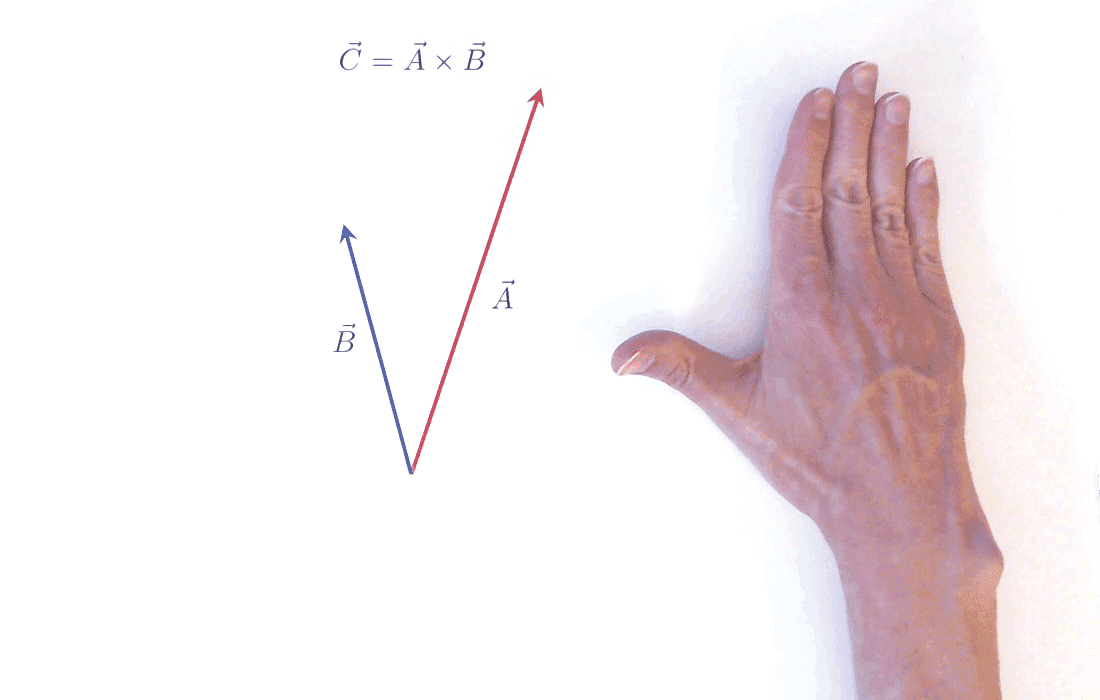
|
Vector before cross = Fingers start
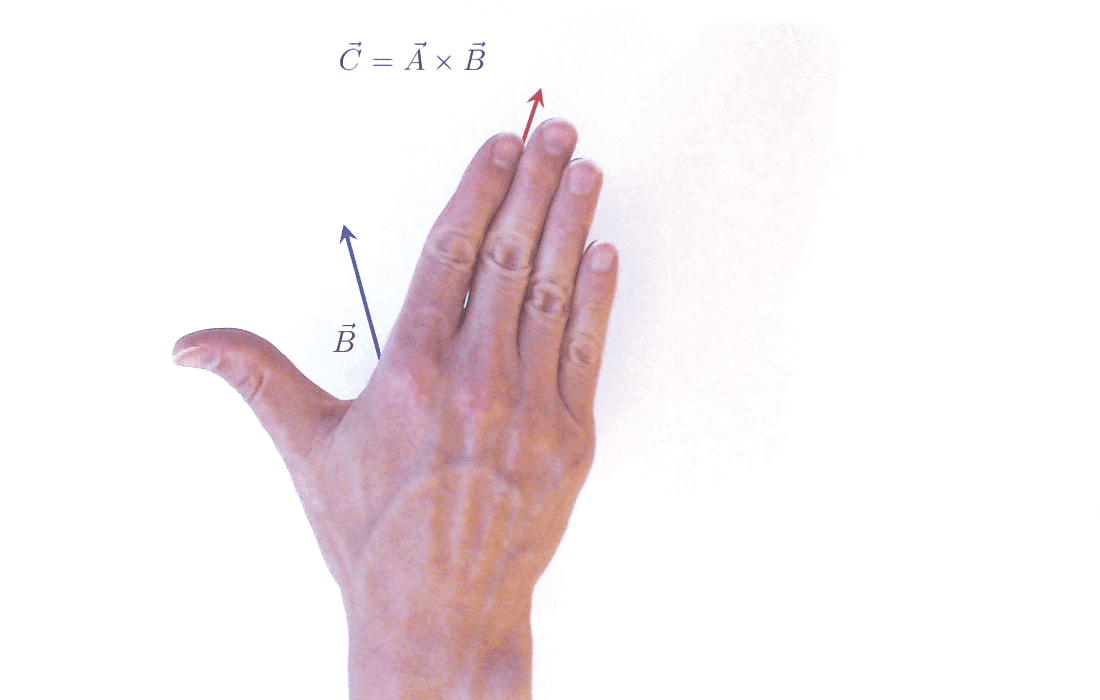
|
Vector after cross = Fingers end
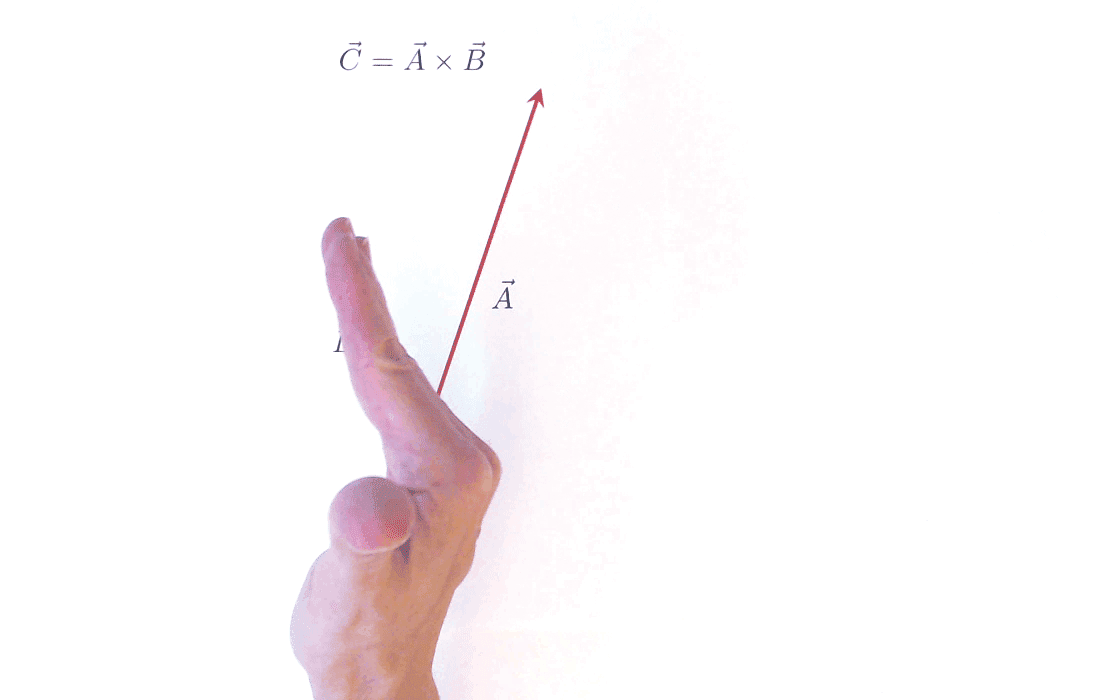
Thumb = Result of cross product
|
Why do I prefer this method?
- As soon as you have an equation, it's easy to tell which part of your right hand goes with which vector:
- The vector that's alone on the left side of your equation goes with your thumb.
- The vectors on either side of the cross go with your fingers. The vector before the cross goes with where your fingers start, the vector after the cross goes with where your fingers hinge toward.
- Most other methods work well when the vectors are all perpendicular to each other, but are confusing when your two vectors A→ and B→ are far from perpendicular. This method works well no matter what the angle is.
4. Look at the equation you're actually trying to solve. If that equation has a negative scalar out in front, then you must reverse (or "flip over") the answer you got from the right hand rule for cross products. (For example, the equation F→ = (−e)v→×B→ .)
Implications of The Right Hand Rule for Cross Products (that you use less often):
What if you have the equation C→ = A→ × B→, where you know C→ and one of the vectors on the right side, and you're looking for the other vector on the right side?
0. Recognize that the result of any cross product (C→) must be perpendicular to both of the vectors involved in the cross product (A→ and B→). So, first find the plane that is perpendicular to C→ and passes through the other vector (A→ or B→) that you were given.
[6]It's pretty common for C→ to be either out of the page or into the page, and the other given vector in the plane of the page. In that case, the vector you're looking for is also in the plane of the page. [7]If not, you may find it helpful to use a pencil as C→, and a small sheet of paper or cardboard perpendicular to it as the plane that contains A→ and B→.
0a. Be careful: unless they give you the magnitudes of the two given vectors, or they say explicitly (or imply[8]E.g. if they ask for the minimum value of B→. That works because if C→ = A→ × B→, then the magnitude of C→ is given by C = AB sinθ. So, B = C/(A sinθ) which is a minimum when sinθ is as big as possible, which happens when θ = 90° ; that is, when A→ and B→ are perpendicular to each other.) that the three vectors are perpendicular to each other, there's actually an infinite number of correct answers: anything on the correct half of the plane. Some books/problems are sloppy and don't state that the vectors are all perpendicular.
1. If you're given the vector before the cross (Vector A→), hold your hand flat, fingers together, thumb perpendicular to your fingers. If you're given the vector after the cross (Vector B→), hold your fingers together already "hinged" around 90° (thumb still perpendicular to your fingers).
2. Line up your thumb so that it points along the vector that's alone on the left side of the equation (Vector C→).
3. If you're given the vector before the cross (Vector A→), use the knuckles of your right hand as a hinge, to "hinge forward" around 90°. The vector you're solving for (Vector B→) is in that half of the plane you found in step 0.
3a. If you're given the vector after the cross (Vector B→), use the knuckles of your right hand as a hinge, to "hinge back" until your hand is flat. The vector you're solving for (Vector A→) is in that half of the plane you found in step 0.
4. Look at the equation you're actually trying to solve. If that equation has a negative scalar out in front, then you must reverse (or "flip over") the answer you got from the right hand rule for cross products.
When solving problems that use right hand rules, you may need some other things:
- Following these same rules, we see that B→ × A→ is in the opposite direction from A→ × B→.
- Calculating the magnitude of the vector resulting from a cross product equation
- The Right Hand Rule for Rotations
- The Right Hand Rule for [magnetic fields created by] Wires
- The Right Hand Rule for [magnetic fields created by] Coils




